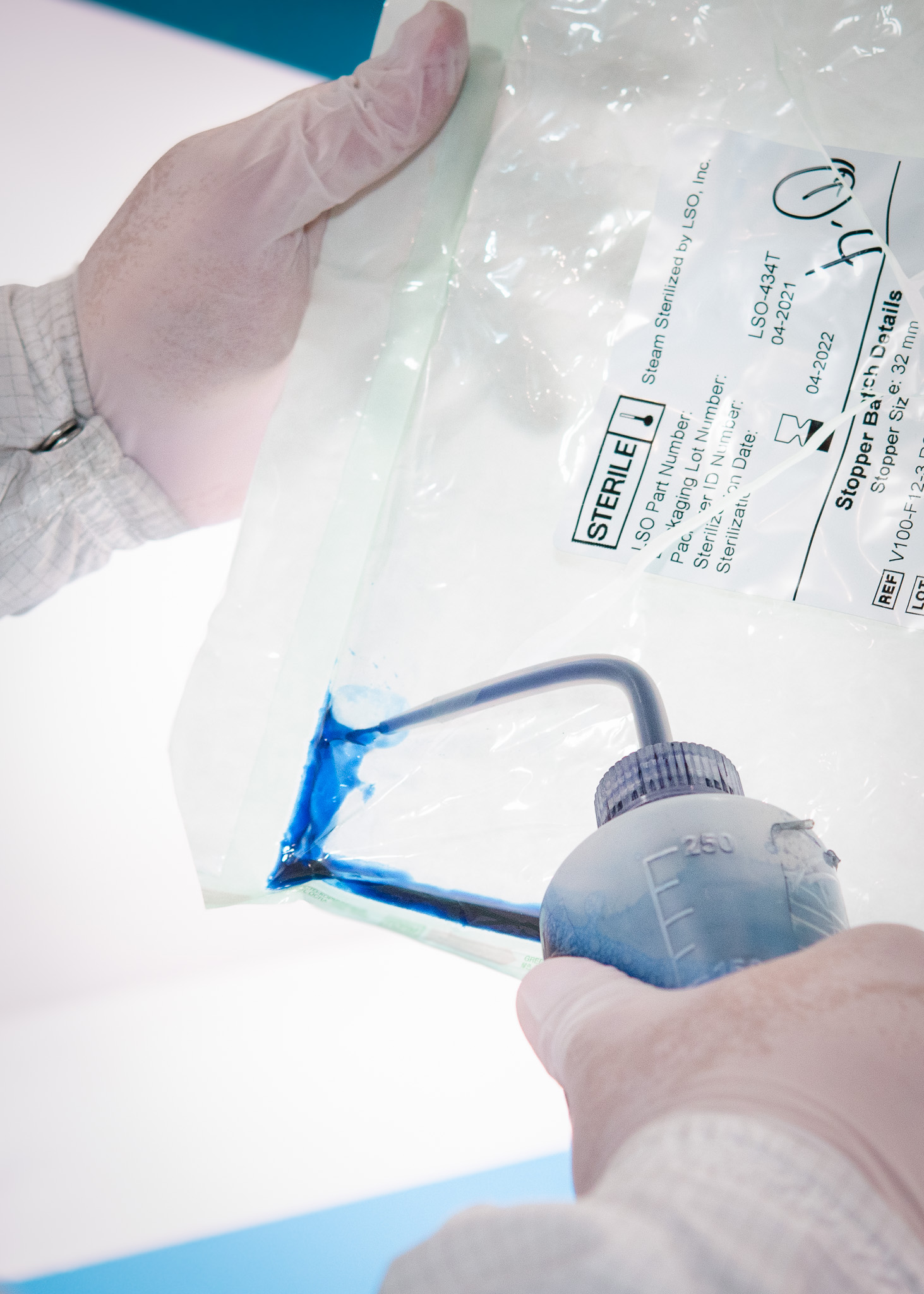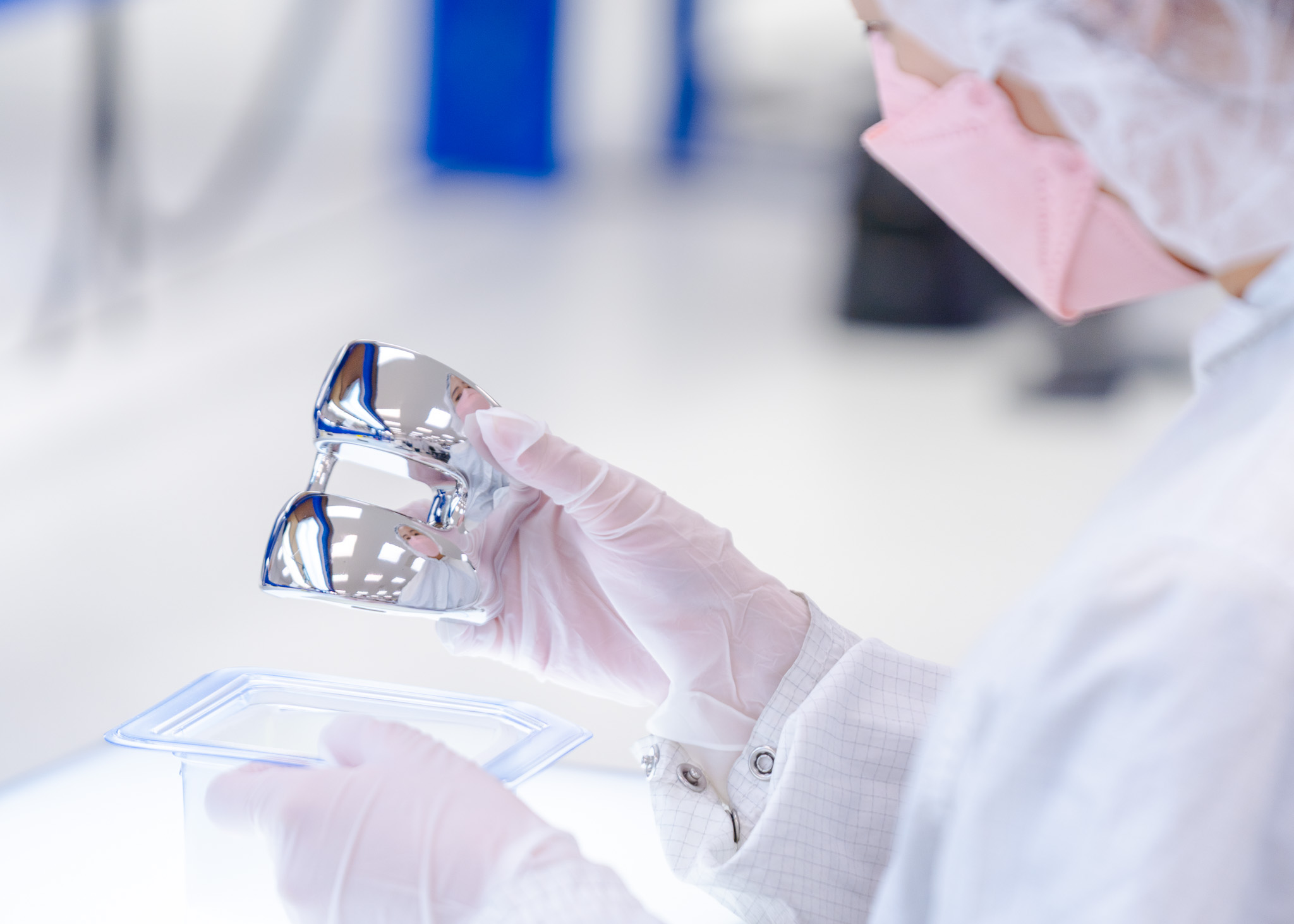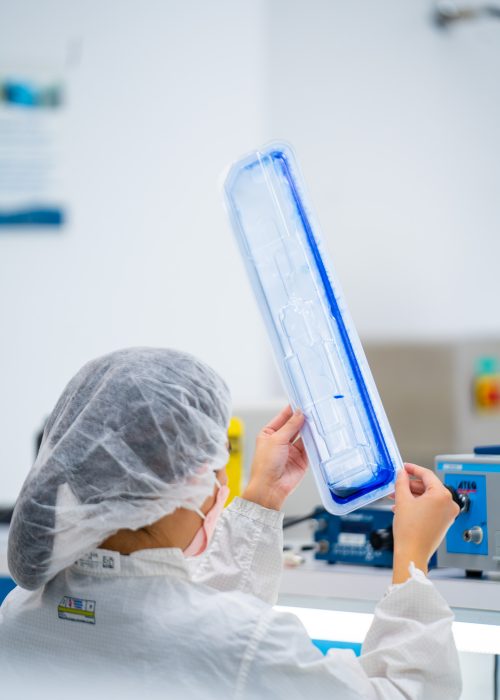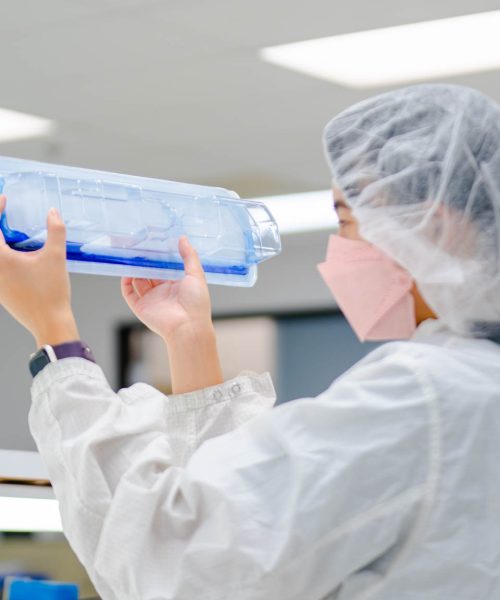Medical Package Testing:
Dye Penetration Testing
Dye penetration testing is an important part of package validation within Life Science Outsourcing’s medical package testing services.

What is dye penetration testing for medical device packaging?
Dye penetration testing is a common method used for evaluating medical packaging integrity and uses a colored dye to identify packaging imperfections. It is part of the quality assurance process for medical device packaging and is essential for patient safety and regulatory compliance.
This type of package testing meets standards by:
- Ensuring sterility
- Detecting defects
- Offering quality assurance


Who needs dye penetration testing?
Medical device manufacturers use dye penetration testing to ensure that their packaging meets necessary safety and quality standards and determine if products will remain sterile throughout the intended shelf life. Pharmaceutical companies use dye penetration testing to ensure drug packaging integrity, and regulatory bodies rely on it for compliance with industry standards and regulations.
How does dye penetration testing work?
Dye penetration testing uses a colored liquid dye to detect leaks or faults in packaging materials. Small seal or material imperfections can be revealed that are not readily apparent to the naked eye. The process requires several steps:
Preparation
The dye is chosen based on its visibility and safety, and a packaging sample is prepared. The sample can be a pouch, tray, or any other form of sterile packaging used for medical devices.
Application of the dye
The dye is introduced into the packaging either by filling with dye solution or by applying it to the sealed package exterior. The package is then subjected to specific conditions such as vacuum or pressure or immersion that allow the dye to penetrate any defects.
Inspection
The package is then visually inspected for any signs of dye penetration.
Documentation and analysis
Any defects are analyzed to determine the cause, which could be due to manufacturing issues, material defects, or sealing problems.


What standards apply?
Dye penetration testing is often part of the regulatory requirements for medical device packaging.
- ISO 11607 – The international standard specifying requirements for packaging systems for terminally sterilized medical devices, including packaging integrity testing.
- ASTM F1929 – The standard test method for detecting seal leaks in porous medical packaging using dye penetration. This test ensures that sterile barrier systems maintain integrity and meet regulatory compliance.
These standards help verify that medical packaging can effectively protect devices from contamination while maintaining sterility throughout storage and transportation.
Why LSO?
As an FDA-registered and ISO 13485-certified contract manufacturing organization, Life Science Outsourcing (LSO) offers assembly, packaging, sterilization, and specialized capabilities in diagnostics packaging and design. Our unique business model combines comprehensive in-house services and extensive regulatory expertise, allowing us to provide the agility and flexibility needed to expedite market launches while standardizing the supply chain and minimizing risks.
